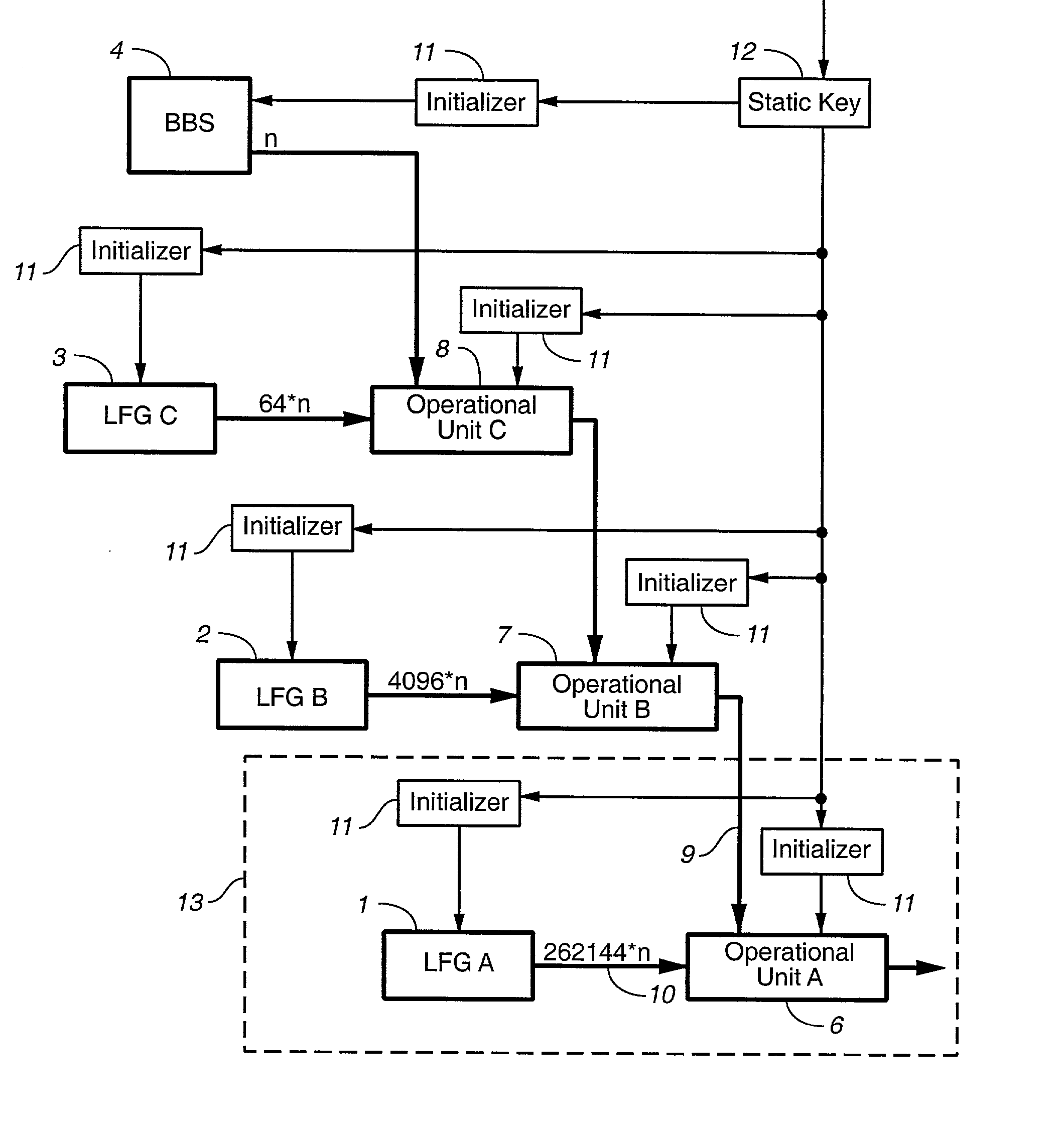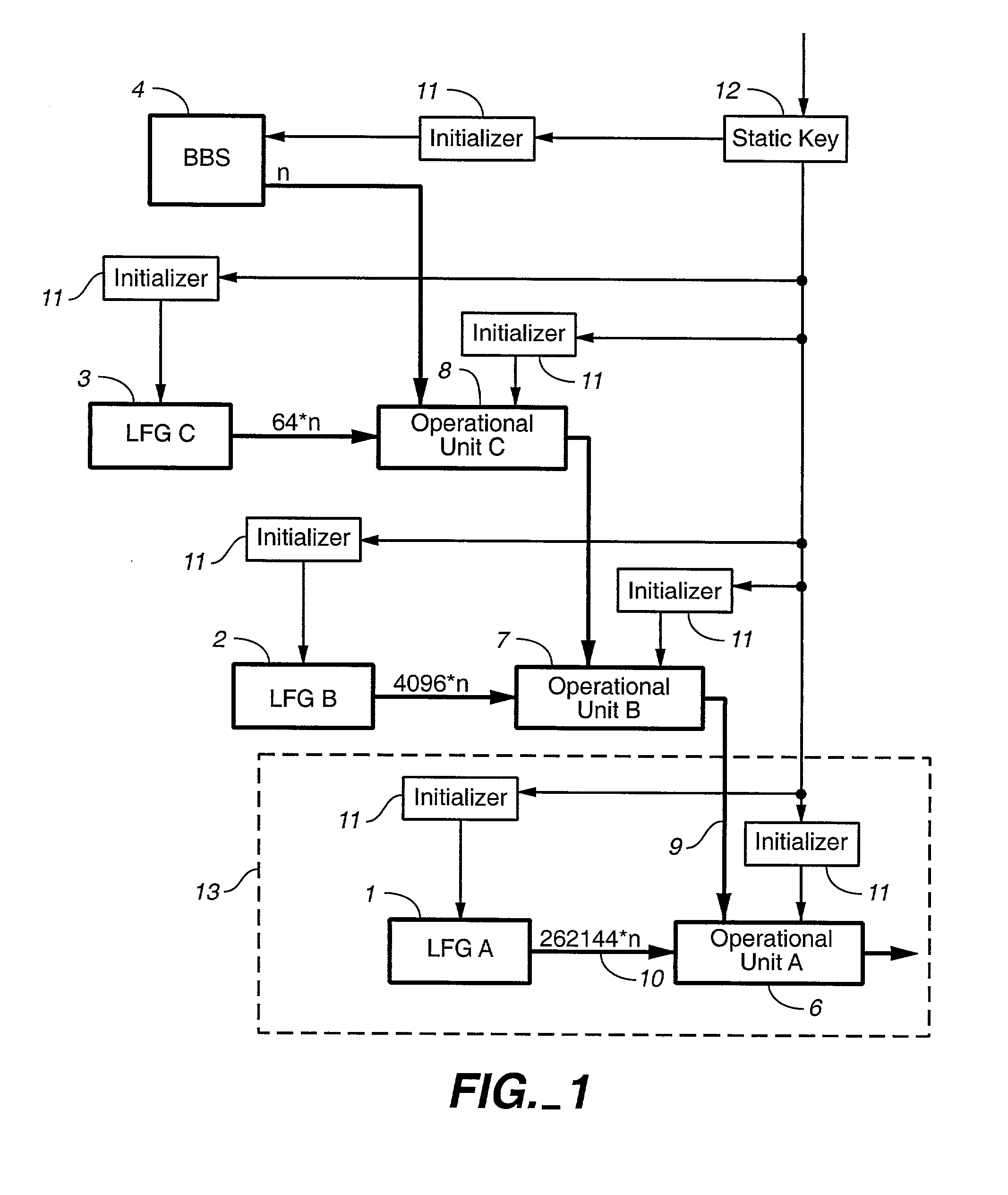Cascaded stream cipher
a stream cipher and stream stream technology, applied in the field of cascaded stream ciphers, can solve the problems of slow random number generators, inability to satisfy certain statistical tests, and inability to secure cryptographically,
- Summary
- Abstract
- Description
- Claims
- Application Information
AI Technical Summary
Benefits of technology
Problems solved by technology
Method used
Image
Examples
Embodiment Construction
[0029] FIG. 1 shows a block diagram of the present invention. Random number generators 1, 2, 3 are Lagged Fibonacci Generators (LFG). These are described e.g. in Donald E. Knuth: The Art of Computer Programming, Vol. 2, Seminumerical Algorithms, Third Edition, Addison Wesley, 1998, pp. 27-29, 186-188. They generate pseudo-random numbers according to the following formula:
X[n]=(X[n-p]+X[n-q])mod M,p>q>0 (1)
[0030] In the preferred embodiment q=24, p=55, Linear Feedback Shift Registers (LFSR) are a special case of LFGs such that the modulus M=1. The present invention applies to LFSRs as well to LFGs. In fact any sufficiently fast pseudo-random number generators can be used in place of generators 1, 2, 3. Each of them can be of different kind.
[0031] A random number generator 4 is slow but cryptographically secure. In the preferred embodiment it is implemented by an algorithm that randomly picks numbers from a stream of pseudo-random numbers generated by a yet another LFG according to fo...
PUM
 Login to View More
Login to View More Abstract
Description
Claims
Application Information
 Login to View More
Login to View More - R&D
- Intellectual Property
- Life Sciences
- Materials
- Tech Scout
- Unparalleled Data Quality
- Higher Quality Content
- 60% Fewer Hallucinations
Browse by: Latest US Patents, China's latest patents, Technical Efficacy Thesaurus, Application Domain, Technology Topic, Popular Technical Reports.
© 2025 PatSnap. All rights reserved.Legal|Privacy policy|Modern Slavery Act Transparency Statement|Sitemap|About US| Contact US: help@patsnap.com



